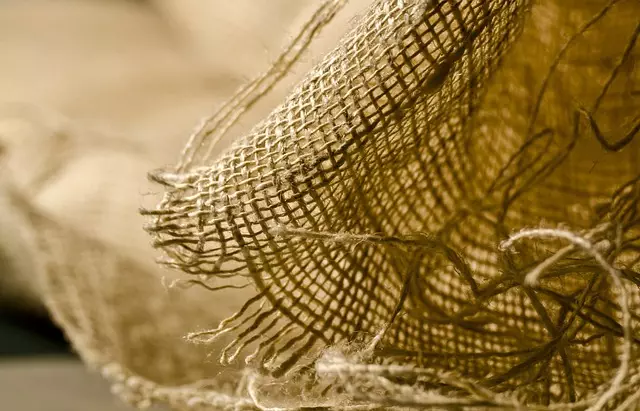Kratom (Mitragyna speciosa), known for its potential analgesic properties, can be effectively cultivated outdoors by replicating its native Southeast Asian environment. Key factors for successful outdoor growth include optimal temperature ranges between 77°F and 85°F (25°C to 30°C) with some flexibility for short-term temperature variations; managing moisture to mimic the wet and dry cycles of its origin, ensuring high humidity, and avoiding over-saturation; providing partial shade with about 4-6 hours of direct sunlight daily; and selecting well-drained, organic-rich soil. Outdoor cultivation not only satisfies the demand for this natural pain relief option but also aligns with sustainable and organic gardening practices. Users should consume kratom responsibly, considering dosage and potential interactions with other medications. Ongoing research into its efficacy for joint pain management underscores the importance of informed use. Growing kratom outdoors requires careful attention to replicating its native conditions to maximize alkaloid yield, particularly mitragynine and 7-hydroxymitragynine, ensuring a sustainable supply with enhanced medicinal benefits.
Explore the natural pathways to joint pain relief with an in-depth look at kratom, a botanical alternative gaining attention for its analgesic properties. In this comprehensive guide on growing kratom outdoors, we delve into the plant’s role in alleviating joint discomfort and how climate factors influence its cultivation. Whether you’re a gardener or a pain management seeker, understanding the optimal conditions for kratom cultivation can enhance its potential benefits. Join us as we explore the practicalities of outdoor kratom farming for maximum pain-relieving effects.
- Understanding Kratom and Its Role in Joint Pain Relief
- Climate Considerations for Growing Kratom Outdoors: Ensuring a Thriving Harvest
- Step-by-Step Guide to Cultivating Kratom Outdoors for Optimal Pain-Relieving Effects
Understanding Kratom and Its Role in Joint Pain Relief

Kratom, a tropical evergreen tree native to Southeast Asia, has gained attention in various natural health circles for its potential analgesic properties, which may offer relief from joint pain. The active compounds found in kratom leaves, namely mitragynine and 7-hydroxymitragynine, are believed to interact with the body’s opioid receptors, providing pain relief without the side effects typically associated with pharmaceutical painkillers. As interest in natural remedies for joint pain has surged, so too has the cultivation of kratom outside its native region. Growing kratom outdoors can be successful in climates that mimic its native environment, with adequate sunlight, moisture, and well-draining soil. This sustainable approach to cultivation not only meets the increasing demand for the plant but also aligns with a growing trend towards organic and eco-friendly practices in horticulture. When harvested responsibly, kratom can be processed into various forms for consumption, offering a natural alternative for those seeking joint pain relief. It’s important for potential users to approach kratom with caution, as it is a potent substance that requires careful consideration of dosage and interaction with other medications. Additionally, ongoing research aims to further understand the mechanisms behind kratom’s effects on pain and its long-term implications for joint health.
Climate Considerations for Growing Kratom Outdoors: Ensuring a Thriving Harvest

Kratom (Mitragyna speciosa), a tropical evergreen tree native to Southeast Asia, requires specific climate conditions to thrive when grown outdoors. Prospective growers in regions with climates similar to its native habitat will have the best success in cultivating kratom. The ideal temperature range for kratom is between 77°F and 85°F (25°C to 30°C), with some variability tolerated, as the plants can endure both higher and lower temperatures for short periods. However, extended exposure to extreme temperatures, whether too hot or too cold, can be detrimental to the plant’s health and yield.
Consistent moisture and high humidity are also critical for kratom cultivation. Outdoor growers should aim for soil that remains consistently moist but not waterlogged, mirroring the wet and dry seasons of its natural environment. Rainfall or an automated irrigation system can be utilized to maintain these conditions. Additionally, the plant prefers partial shade to full sun, with around 4-6 hours of direct sunlight being optimal. In regions with intense sunlight, especially in the afternoon, providing ample shade cloth can protect the kratom from sunburn and stress. Growers must also consider the soil type, ensuring it is well-draining yet rich in organic matter to support healthy growth. Regular monitoring of these environmental factors, coupled with a well-thought-out cultivation plan, will contribute to a thriving kratom harvest when growing outdoors.
Step-by-Step Guide to Cultivating Kratom Outdoors for Optimal Pain-Relieving Effects

Kratom (Mitragyna speciosa), a tropical evergreen tree native to Southeast Asia, has gained attention for its potential pain-relieving effects. Cultivating kratom outdoors can be a rewarding endeavor, providing the plant with optimal conditions to thrive and maximize its active compounds. To successfully grow kratom outside, one must carefully consider the climate, soil quality, and maintenance practices that align with the species’ natural habitat.
Begin by selecting a site with well-drained soil and full to partial sunlight, similar to the conditions found in its native environment. Kratom trees prefer a consistent moisture level without waterlogged soil. Plant your kratom seeds or saplings during the warmer months, ensuring the ground temperature is at least 70°F (21°C) for optimal germination. Water regularly but avoid over-saturation, as this can lead to root rot. Fertilize with a balanced, organic fertilizer every few weeks to supply essential nutrients. Prune the tree to maintain its shape and encourage bushier growth, which can enhance the yield of mature leaves for harvesting. Regular monitoring for pests and diseases is crucial, as kratom can be susceptible to certain insects and pathogens. By emulating the natural conditions that kratom thrives in, outdoor cultivation can produce a crop with the highest potential for pain-relieving alkaloids, mitragynine and 7-hydroxymitragynine. This approach not only ensures a sustainable supply of the plant but also optimizes its medicinal properties for relief from joint pain.
Growing kratom (Mitragyna speciosa) outdoors offers a sustainable approach to sourcing this natural remedy for joint pain relief. By understanding the intricacies of its cultivation, as detailed in the article, individuals can optimize their harvests, ensuring a consistent supply of kratom with potent analgesic effects. The guide provided provides clear, actionable steps for those looking to cultivate this plant effectively. With careful attention to climate considerations and optimal growing conditions, one can successfully grow kratom outdoors and potentially alleviate joint pain naturally. This article serves as a comprehensive resource for anyone interested in the cultivation of kratom for its joint pain-relieving properties.






